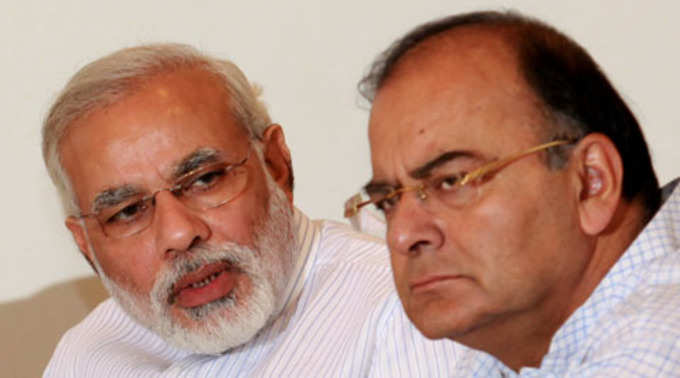 Indian economy is not growing at the expected rate. The current rate of 7.4%
Indian economy is not growing at the expected rate. The current rate of 7.4% EXPLAINED: Why it's not such a rosy picture
India’s
Here are the underlying causes:
We have identified the following causes for less than expected GDP growth rate: [GDP = C+I+G+NX]
i) Because of unpredictable monsoons, the farms can’t get proper irrigation resulting into low agriculture yield, hence less disposable income for farmers who constitute (56.6% ) of total workforce. This in turn results into less consumption demand or idle capacities for industries. Industries don’t perceive any incentive to add capacity leading to less employment opportunities for the 1 million workforce being added annually to the economy.
ii) The 30% corporate tax rate is quite discouraging for attracting private investment when we compare it to other emerging economies. Also lack of proper infrastructure is becoming a major hindrance in encouraging foreign investments.
iii) The large amount of non-performing assets (NPAs) lying with national banks are limiting credit risk taking capacity of banks resulting into non-availability of loans for small and medium scale enterprises.
Some
We have come up with the following four recommendations. The first recommendation viz. revival of agriculture sector will increase consumption while the other three will drive investment as planned expenditure for any economy is a function of consumption and investment. All of these will cause the IS curve to shift outwards i.e. towards right resulting in increased equilibrium production. Although it will result in higher
i) Revival of agriculture sector: We suggest allocation of a significant portion of upcoming budget for agriculture sector towards development of irrigation facilities and other agriculture related infrastructures viz. roads and fair price markets. In 2015-16 budget, allocation to agriculture was reduced by 14.3% compared to budget estimate in 2014-15. However it is the need of time to revitalize the sector and drive consumption demand with industries producing under capacity and tractors sales plummeting (a sign of concern).
ii) Investment in infrastructure: Investment in infrastructure will incentivize foreign & local investment and will boost Digital India, Make in India (such as device manufacturing) & Incredible India (tourism) initiatives as well. With NHAI suffering with legal issues worth 25000 crore , it is pressing time for reforms and allocation to settle these legal issues, give impetus for more construction projects and at the same time invest into Railways to bring more connecting trains in far-flung areas so that they can be linked to mainstream economy. These efforts will also generate lots of jobs at many skill levels.
iii) Corporate tax rate cut: A decrease in corporate tax rate from current 30% to say 25% will decrease the corporate glut and will incentivize them to re-invest their savings. It will also attract private investors and investment by foreign institutional and direct investors. A decrease in corporate tax followed by a decrease in personal tax for income more than 10 lakh per annum will drive personal savings and hence investment. Although a cut in corporate tax rate to attract investments will decrease government revenues in short-term but in long-term it will result into a win-win situation by increase in the volume of overall tax collection.
iv) Revival of national banks: Most of the national banks are facing pressing issues of distressed assets (a whopping 11%) as most of the infrastructure projects got stalled. Government should aim at invigorating this crucial sector by adopting measures to take care of such projects (Selling or reviving). This will enhance the credit-risk taking capability of banks thus prompting them to make credits available for small and medium scale businesses hence promoting growth of SMEs.
Thus, it his highly recommended and expected from Team Modi to deliver a budget focusing on structural reforms and truly strive towards ‘Acche Din’ otherwise the economy may fall prey to slow down across the globe.
(The article has been authored by Manish Pandey, a student of IIM Bangalore. Having graduated from NIT Allahabad, Manish has worked close to 3 years for a top IT firm. He has keen interest in film-making,
DISCLAIMER - The below article is an individual’s views and does not represent the institute's sentiment